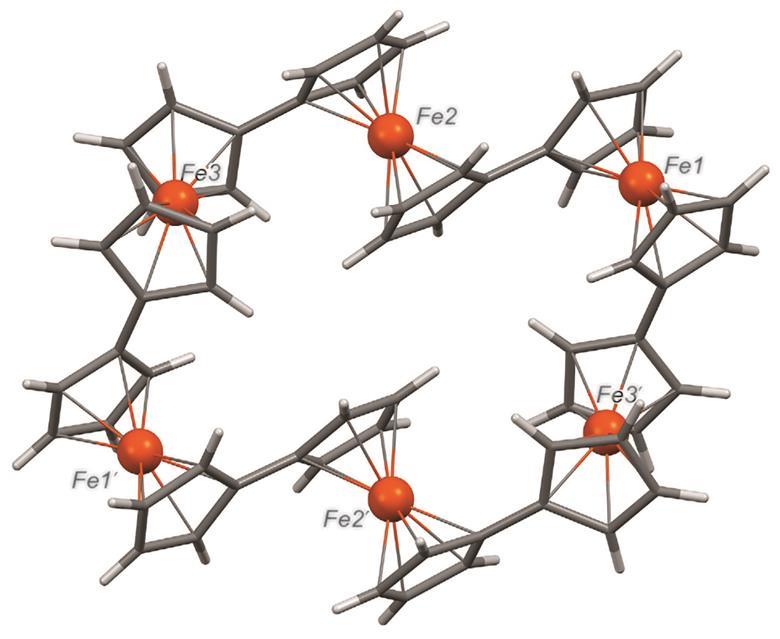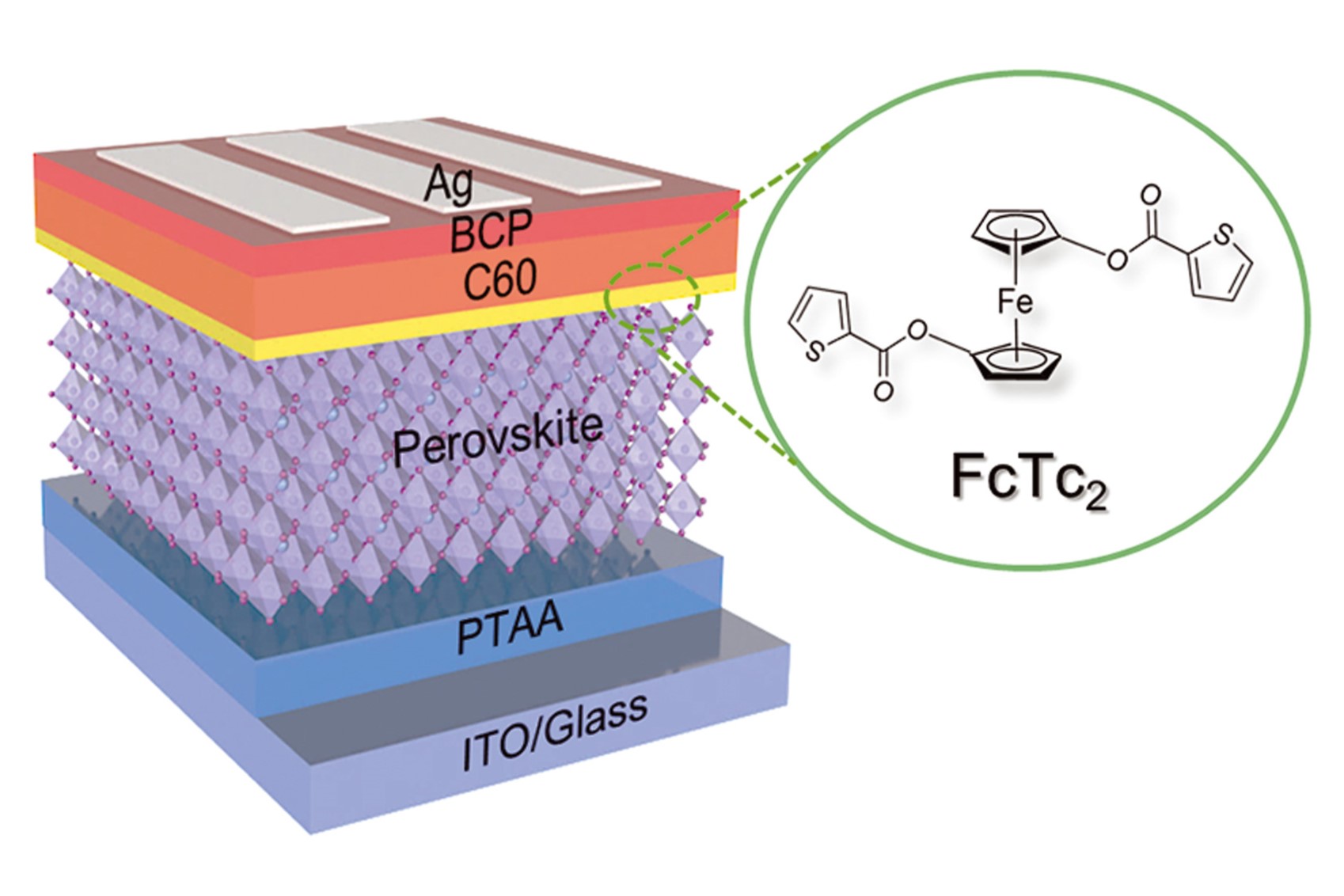Electronic materials
As one of the most resourceful organometallic molecules studies for over 70 years, ferrocene has attracted interest in numerous research fields due to its favourable stability, synthetic versatility, and reversible redox processes. Our work seeks to further unlock the electrochemical and electron-transfer potential of ferrocene through the synthesis and characterisation of mono- and multi-nuclear complexes for applications in solar cells, molecular wires, and quantum-electronic devices.
Electronic Materials
- Metal-Metal Communcation and 'Ring-tronics'
- Organometallic-Functionalised Perovskite Solar Cells
- Organometallics for Conductive and Thermoelectric Materials
This work explores the synthesis, electronic and spintronic properties of linear-, in phase- and ring-shaped molecules with multiple transition metal centres. This new class of materials is expected to display quantum interference and spin frustration effects, which will provide fundamentally new insight into the properties of such complex molecular structures. Ultimately, these properties could be exploited in novel types of single-molecule quantum-electronic devices. With collaborator Dr. Tim Albrecht, projects are interdisciplinary, involving chemical synthesis and single-molecule characterization at room- and ultralow-temperatures.
Key references: Chem. Mater., 2017, 29, 8663 ;Angew. Chem. Int. Ed., 2017, 56, 6838 ; Nat. Chem., 2016, 812, 145 ; Dalton Trans., 2014, 43; Organometallics, 2013, 32, 6053; Chem. Eur. J., 2008, 14, 4346; Organometallics, 2006, 25, 2525

Metal-halide perovskite solar cells have emerged as an innovative photovoltaic technology due to their extraordinary optoelectronic properties, low cost and solution processability. However, their efficiencies and operational lifetimes often lag behind commercial silicon-based solar cells. Organometallic functionalisation of perovskite solar cells has recently been shown to provide excellent, and promising, efficiencies and stability to compete with these commercial devices. In collaboration with world-leading academic research groups and industry partners, we aim to synthesise and evaluate a range of novel organometallic compounds to drive the development and translation of organometallic-based perovskite solar cell devices.
Key references: Science, 2022, 376, 6591; J. Am. Chem. Soc., 2024, 146, 13391

We are researching into a new generation of switchable organic/organometallic compounds, with the potential to fulfil societal needs for flexible energy harvesting materials, low-power neuromorphic computing, smart textiles and self-powered patches for healthcare. The possibility of creating these exciting materials derives from a series of world firsts by the Long group and collaborators, demonstrating that advantageous room-temperature quantum interference effects can be scaled up from single molecules to self-assembled monolayers, new strategies for controlling molecular conformation and energy levels, and new methods of molecular assembly, which can be deployed in printed scalable architectures. This project is part of a £7M EPSRC programme grant (2023-2028), with collaborators at Imperial College and Universities of Lancaster, Oxford and Liverpool https://gow.epsrc.ukri.org/NGBOViewGrant.aspx?GrantRef=EP/X026876/1
Our focus is on the design, synthesis and evaluation of high-performance, thin-film, organic/organometallic materials, featuring organometallic-based (ferrocenes) or organic-based (polyaromatics)-alkynyl compounds.
Key references: Chem. Sci., 2022, 13, 28; Chem. Sci., 2022, 13, 18; Organometallics, 2021, 40, 8; J. Am. Chem. Soc., 2020, 142, 19; Nat. Chem., 2016, 812, 145
Contact
Professor Nick Long
Email: n.long@imperial.ac.uk
Telephone: +44 (0)20 7594 5781
Location
501J
Molecular Sciences Research Hub
White City Campus


